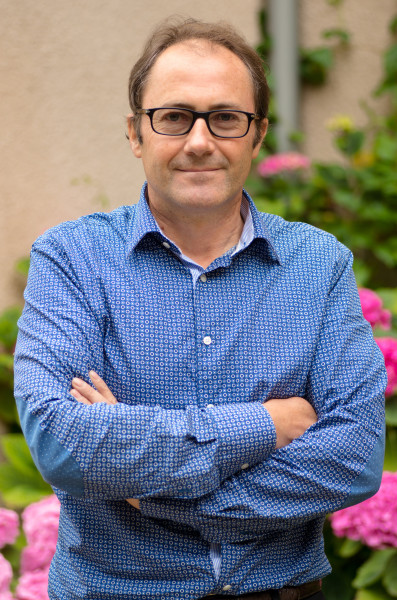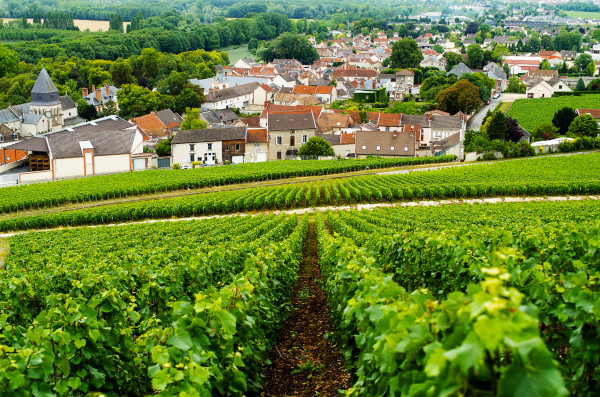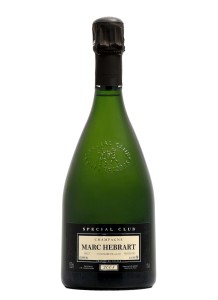The following is an excerpt from the upcoming book The Essence of Champagne: In the Glass and at the Table by Tom Hyland, to be published in 2015. Text and photos ©Tom Hyland.
Jean-Paul Hébrart, Champagne Marc Hébrart (Photo ©Tom Hyland)
At Champagne Marc Hébrart, in the quaint village of Mareuil-sur-Aÿ in the eastern reaches of the Vallée de la Marne, Jean-Paul Hébrart produces several different cuvées that perfectly represent their origins. They are technically very well made and perhaps just as important, they are engaging, delicious wines. But they are not the most powerful examples of Champagne you will find and that’s just fine with Hébrart. “I prefer a good balance between the fruit and the acidity and the elegance. You can find a wine with more complexity, but I prefer a wine with balance.”
Hébrart owns fifteen hectares in various villages, with eight and one half hectares being situated in Mareuil-sur-Aÿ; other sites for his vines include Grand Cru villages of Oiry, Chouilly and Avize in the Côte des Blancs, Aÿ, in the Vallée de la Marne (for Pinot Noir) and Premier Cru villages such as Bisseuil, Dizy and Hauvillers. Planting breakdown is 70% Pinot Noir, 30% Chardonnay and average annual production is 110,000 bottles.
Hébrart takes great care in understanding exactly what characteristics and flavor profiles will emerge from various villages and even individual plots. “When you taste Chardonnay from the Côte des Blancs villages of Cramant and Le Mesnil-sur-Oger, they are at the complete opposite. Cramant is always very charming as a still wine at the beginning and Le Mesnil is very strict – you need time to drink it.”
Hébrart has seventy different parcels; one of his finest is a Lieu-dit named Croix Blanche on a hill in Mareuil-sur-Aÿ, not far from the famed Clos des Goisses vineyard of Philipponnat. This is planted to Pinot Noir and is an important part of the blend for his Special Club bottling.
A section of Hébrart’s vineyards at Mareuil-sur-Aÿ (Photo ©Tom Hyland)
For his excellent non-vintage Blanc de Blancs, he blends wines from Oiry, Chouilly and Mareuil-sur-Aÿ. “If you taste the still wine Chardonnay from these villages,” he says, “they are very, very different.” This is a beautifully made wine with intense aromas of lemon, white peach and chamomile with very good acidity and beautiful focus and varietal purity; Blanc de Blancs represents between 15%-20% of his production.
His Rosé is a captivating wine, made entirely from his vineyards in Mareuil; the blend is 50% Chardonnay, 43% Pinot Noir and 7% Mareuil Rouge. The house style beautifully shines through here, as Hébrart notes when discussing this wine. “I want a rosé that is very elegant and very fresh. You can find a lot of rosé in Champagne with a lot of power, a saignée rosé for example. Those wines have a lot of body and need food. It’s like a red wine, so for me, it’s too much. I prefer my style.”
Personally, I love his rosé. I admit to being almost obsessed with rosé Champagne, whatever the style, so I was excited to taste this wine. Displaying a lovely bright pink color with engaging aromas of red cherry and carnations, there is very good acidity along with excellent persistence. If I was teaching an class on Champagne, this would most likely be the rosé I’d taste out, as it’s a textbook style of a delightful, beautifully balanced, elegant rosé that should appeal to just about every lover of Champagne.
Finally, there is his Special Club bottling, a blend of 60% Pinot Noir from Mareuil and 40% Chardonay from Oiry and Chouilly; all of the fruit is from vines averaging 50 years of age. Hébrart is currently one of 28 Champagne producers that make a Special Club offering; packaged in a distinct members’ bottle, this is the best wine from each producer. Grapes must be from their own vineyards and before the wine is bottled, each producer must submit samples to a committee for a blind tasting; if the wine is not of sufficent quality, it cannot be used for Special Club; as Hébrart notes, this step is “a protection for the members.” It’s a strict process, but the finished wines are marvelous.
Summing up his philosophy, Hébrart speaks of his desire for harmony in his Champagnes. “For me when you drink a glass of Champagne, you need to drink a second glass. When it’s elegant with good balance, it’s easy to drink.”
2009 Special Club
Straw/light yellow; very fine perlage. Subtle aromas of citrus peel and Anjou pear. Very good to excellent concentration. Rich mid-palate, outstanding complexity, lively acidity. Extremely delicate sensation in the finish. Great finesse! Enjoy over the next 10-12 years.
Food pairing
Lobster or crayfish



